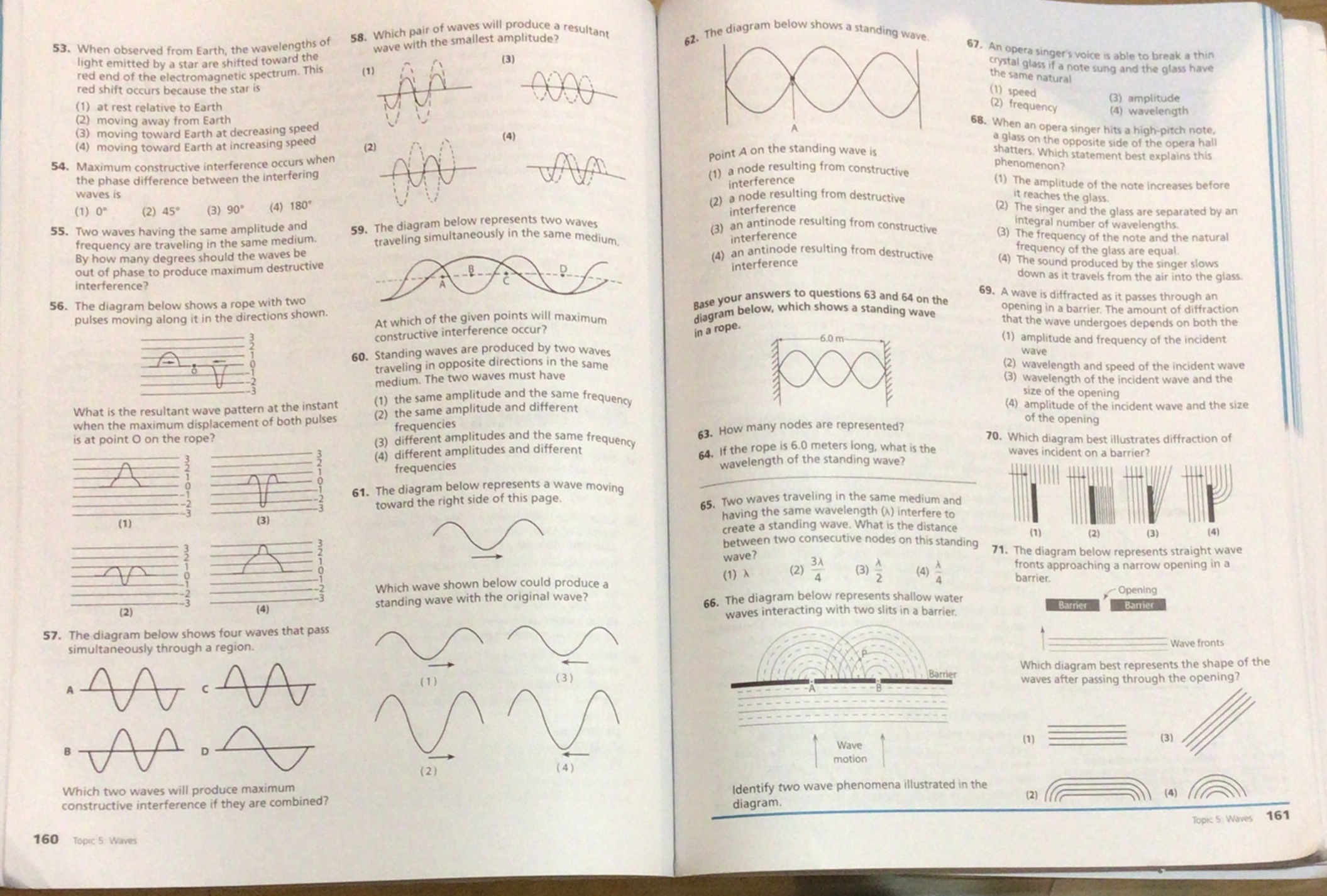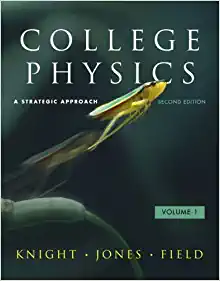53. When observed from Earth, the wavelengths of 58. Which pair of waves will produce a resultant wave with the smallest amplitude? 62. The diagram below shows a standing wave. light emitted by a star are shifted toward the (3) red end of the electromagnetic spectrum. This (1) 67. An opera singer's voice is able to break a thin red shift occurs because the star is crystal glass if a note sung and the glass have the same natural (1) at rest relative to Earth (1) speed (2) moving away from Earth (2) frequency (3) amplitude (3) moving toward Earth at decreasing speed (4) wavelength (4) moving toward Earth at increasing speed (2) ( 4) 68. When an opera singer hits a high-pitch note, 54. Maximum constructive interference occurs when Point A on the standing wave is a glass on the opposite side of the opera hall shatters. Which statement best explains this the phase difference between the interfering (1) a node resulting from constructive phenomenon? waves is interference (1) The amplitude of the note increases before (1) 0" (2) 45 (3) 90* (4) 180' (2) a node resulting from destructive interference it reaches the glass. 55. Two waves having the same amplitude and 59. The diagram below represents two waves (2) The singer and the glass are separated by an frequency are traveling in the same medium. traveling simultaneously in the same medium. (3) an antinode resulting from constructive interference integral number of wavelengths. By how many degrees should the waves be (4) an antinode resulting from destructive (3) The frequency of the note and the natural out of phase to produce maximum destructive frequency of the glass are equal. interference interference? 4) The sound produced by the singer slows down as it travels from the air into the glass. 56. The diagram below shows a rope with two pulses moving along it in the directions shown. Base your answers to questions 63 and 64 on the 69. A wave is diffracted as it passes through an At which of the given points will maximum diagram below, which shows a standing wave opening in a barrier. The amount of diffraction constructive interference occur? in a rope. that the wave undergoes depends on both the 60. Standing waves are produced by two waves (1) amplitude and frequency of the incident traveling in opposite directions in the same wave medium. The two waves must have (2) wavelength and speed of the incident wave 3) wavelength of the incident wave and the What is the resultant wave pattern at the instant (1) the same amplitude and the same frequency size of the opening when the maximum displacement of both pulses 2) the same amplitude and different 4) amplitude of the incident wave and the size is at point O on the rope? frequencies of the opening 3) different amplitudes and the same frequency 63. How many nodes are represented? (4) different amplitudes and different 64. If the rope is 6.0 meters long, what is the 70. Which diagram best illustrates diffraction of frequencies wavelength of the standing wave? waves incident on a barrier? 61. The diagram below represents a wave moving toward the right side of this page. 65. Two waves traveling in the same medium and (1) (3) having the same wavelength (A) interfere to create a standing wave. What is the distance between two consecutive nodes on this standing (1) (2) (3) wave? 31 71. The diagram below represents straight wave Which wave shown below could produce a (1) A 4 (3) (4) fronts approaching a narrow opening in a barrier. (2) (4) standing wave with the original wave? 66. The diagram below represents shallow water Opening waves interacting with two slits in a barrier. Barrier Barrier 57. The diagram below shows four waves that pass simultaneously through a region. Wave fronts (3) Which diagram best represents the shape of the waves after passing through the opening? Wave (1) (2) (4) motion Which two waves will produce maximum constructive interference if they are combined? Identify two wave phenomena illustrated in the diagram. (2) (4) 160 Topic 5: Waves Topic S. Waves 161







